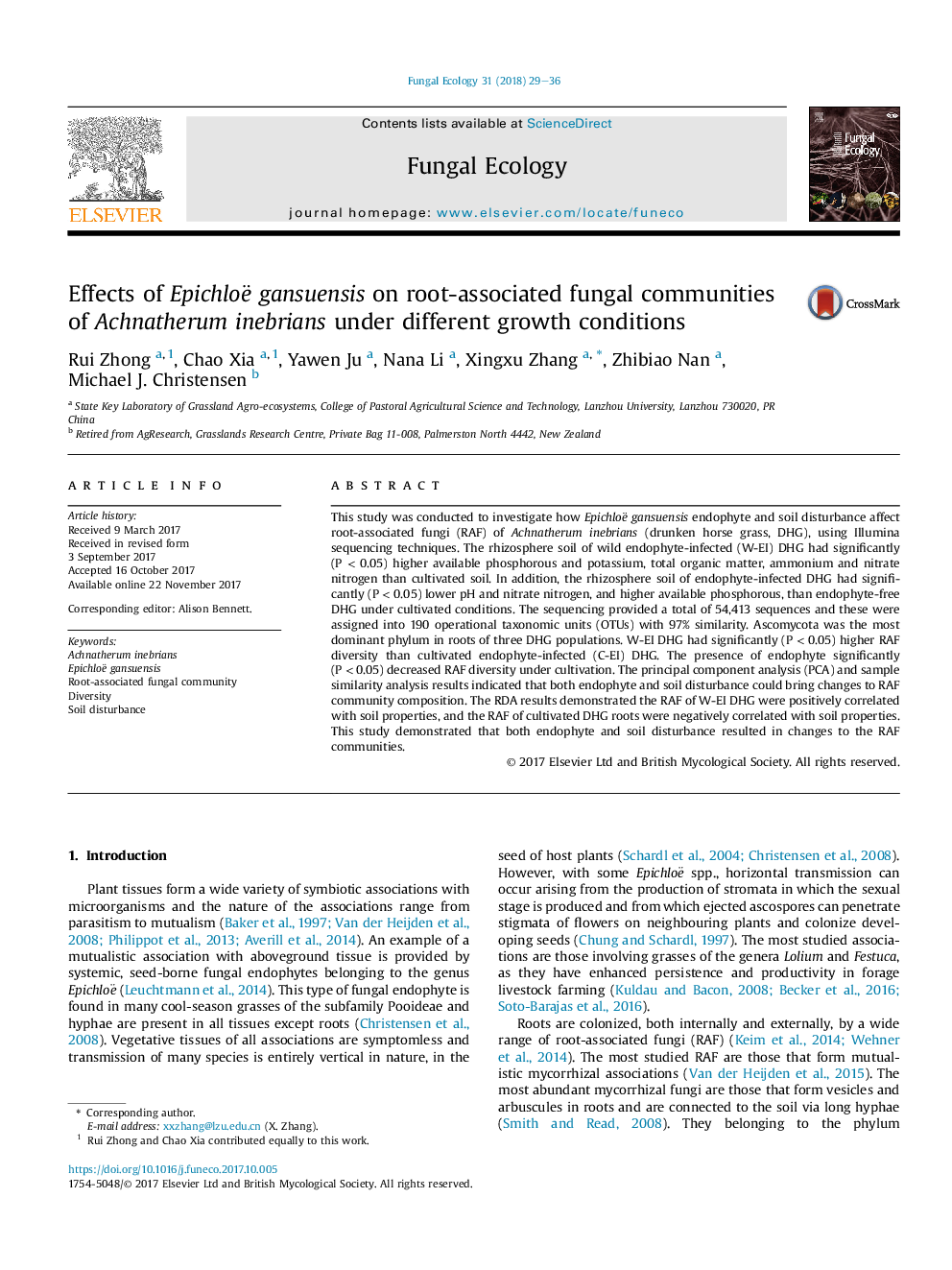| کد مقاله | کد نشریه | سال انتشار | مقاله انگلیسی | نسخه تمام متن |
|---|---|---|---|---|
| 8384261 | 1543635 | 2018 | 8 صفحه PDF | دانلود رایگان |
عنوان انگلیسی مقاله ISI
Effects of Epichloë gansuensis on root-associated fungal communities of Achnatherum inebrians under different growth conditions
دانلود مقاله + سفارش ترجمه
دانلود مقاله ISI انگلیسی
رایگان برای ایرانیان
موضوعات مرتبط
علوم زیستی و بیوفناوری
علوم کشاورزی و بیولوژیک
بوم شناسی، تکامل، رفتار و سامانه شناسی
پیش نمایش صفحه اول مقاله

چکیده انگلیسی
This study was conducted to investigate how Epichloë gansuensis endophyte and soil disturbance affect root-associated fungi (RAF) of Achnatherum inebrians (drunken horse grass, DHG), using Illumina sequencing techniques. The rhizosphere soil of wild endophyte-infected (W-EI) DHG had significantly (PÂ <Â 0.05) higher available phosphorous and potassium, total organic matter, ammonium and nitrate nitrogen than cultivated soil. In addition, the rhizosphere soil of endophyte-infected DHG had significantly (PÂ <Â 0.05) lower pH and nitrate nitrogen, and higher available phosphorous, than endophyte-free DHG under cultivated conditions. The sequencing provided a total of 54,413 sequences and these were assigned into 190 operational taxonomic units (OTUs) with 97% similarity. Ascomycota was the most dominant phylum in roots of three DHG populations. W-EI DHG had significantly (PÂ <Â 0.05) higher RAF diversity than cultivated endophyte-infected (C-EI) DHG. The presence of endophyte significantly (PÂ <Â 0.05) decreased RAF diversity under cultivation. The principal component analysis (PCA) and sample similarity analysis results indicated that both endophyte and soil disturbance could bring changes to RAF community composition. The RDA results demonstrated the RAF of W-EI DHG were positively correlated with soil properties, and the RAF of cultivated DHG roots were negatively correlated with soil properties. This study demonstrated that both endophyte and soil disturbance resulted in changes to the RAF communities.
ناشر
Database: Elsevier - ScienceDirect (ساینس دایرکت)
Journal: Fungal Ecology - Volume 31, February 2018, Pages 29-36
Journal: Fungal Ecology - Volume 31, February 2018, Pages 29-36
نویسندگان
Rui Zhong, Chao Xia, Yawen Ju, Nana Li, Xingxu Zhang, Zhibiao Nan, Michael J. Christensen,